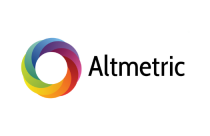What are Digital Humanities?

It’s Complicated: Defining Digital Humanities
Arriving at an authoritative definition of Digital Humanities (DH) is particularly difficult when those directly involved in the field have yet to arrive at a consensus of what it means. Some take a cartographic approach, describing it as being “at the intersection of computing and the disciplines of the humanities.” Others refer to it as a simple re-branding of the old “humanities computing” field. The most fervent advocates argue that it’s not really ready for definition because we are still exploring the potential of what can be done with the available tools and methodologies.
What seems clear is that the fundamental pedagogy of the humanities hasn’t changed per se, but new technological capabilities are taking humanities researchers into new collaborations with digital technology. Surprisingly, one of the most succinct definitions of Digital Humanities can be found on Wikipedia: “it is methodological by nature and interdisciplinary in scope. It involves investigation, analysis, synthesis and presentation of information in electronic form. It studies how these media affect the disciplines in which they are used, and what these disciplines have to contribute to our knowledge of computing.”
It’s More Than Just Cool Toys
The Stanford Humanities Center lists digital humanities projects using such tools as ”3-D mapping, electronic literary analysis, digitization, and advanced visualization techniques in interdisciplinary research that aims to shed new light on humanities research.” In practical terms, such projects can include text mining, analysis and visualization of the works of Walt Whitman and William Shakespeare, or the preservation of digital game environments. The most active projects currently center on leveraging the technology as a communication platform for advocating on behalf of the humanities in an increasingly electronic world.
Comparison with 140-Character Twitter?
Matt Kirschenbaum in his paper “What is Digital Humanities and What’s It Doing in English Departments?” draws an interesting comparison between DH and Twitter and their respective impact on scholarly communication, allowing the development of a distinct network topology. For Twitter, that topology is manifested in “aggregates of affinities, formally and functionally manifest in who follows whom, who friends whom, who tweets whom, and who links to what.” For DH practitioners, the topology seems to be a group of highly dedicated professional across all academic strata fighting for the humanities in a declining institutional terrain focused more on cost cutting than research.
Still a Long Way to Go!
As the old saying goes, “the proof of the pudding is in the eating.” For DH this means that substantive research will be required to transition to a field that many dismiss as an “island of Misfit Toys” into a more mainstream body of work.
Not being able to reach consensus on the definition of what you’re doing is fine in the early days of the development of your movement, but if your long-term survival depends on the utilization of expensive digital equipment, budget proposals are going to demand more than just being “at the intersection of computing and humanities.”









